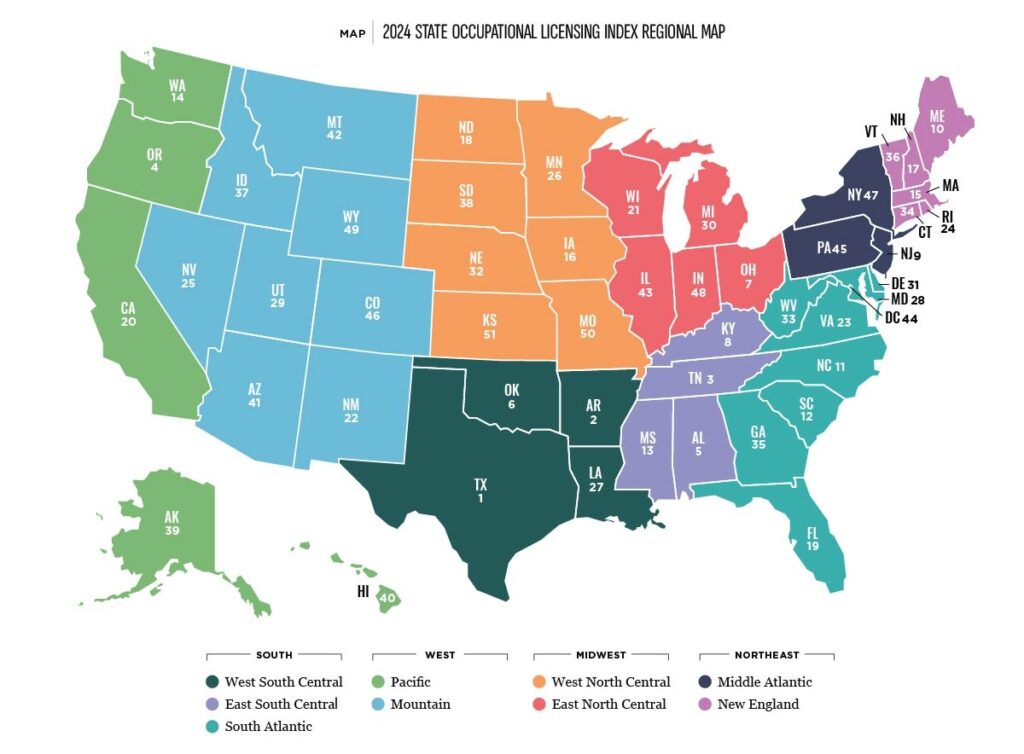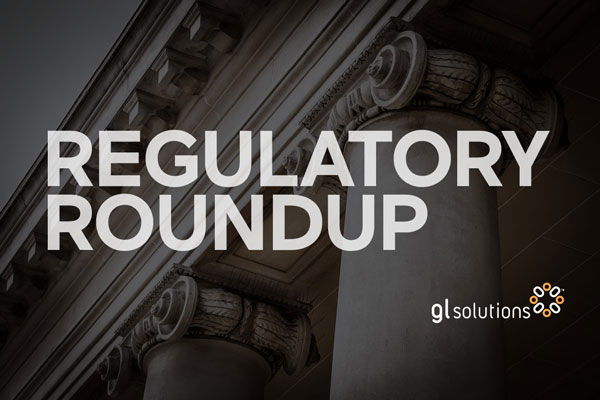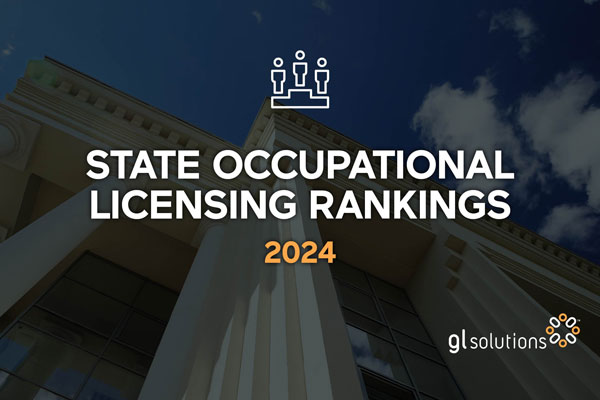Discover How Your State Ranks
Find out how your state ranks in the latest edition of the State Occupational Licensing Index. We interview Edward Timmons, co-author of the State Occupational Licensing Index 2024 from the Archbridge Institute. He breaks down the key takeaways from the report and explains how to use the information at your regulatory agency.
The second edition of the State Occupational Licensing Index measures licensing burdens across occupations and ranks all 50 U.S. states. In the report, for example, Texas ranks first, with the highest occupational licensing burden, while Kansas ranks last, with the lowest licensing burden.
“After months of meticulous research,” says Timmons, “our team hopes to provide a valuable resource for the millions of workers directly impacted by occupational licensure and the many millions more who are indirectly affected by such requirements.” Edward Timmons, a senior research fellow with the Archbridge Institute, also serves as the director of the Knee Regulatory Research Center at West Virginia University.

Map of state rankings; Archbridge Institute
Q&A with Edward Timmons
In our interview with report co-author, Edward Timmons, we learn the basics about the report—from how states receive their scoring to how a regulatory agency benefits from the information.
GL Solutions: What are the key takeaways from the report?
Ed Timmons: I would say the big differences across states with respect to number of licensed occupations (199 in Texas vs 136 in Kansas). Also, interesting regional differences (West and East South Central vs. West South Central, for example). Also, the large number of uniquely licensed occupations.
GL Solutions: How can a state regulatory agency best use the information in the report?
Ed Timmons: If a state uniquely licenses an occupation, state agencies may wish to reconsider if they are using the right regulatory approach. Perhaps a less stringent regulatory approach (e.g., registration) might be appropriate.
GL Solutions: How did the 2024 report compare to the 2023 report? Any notable changes?
Ed Timmons: We consolidated some occupational categories and updated the data. Another big addition was explicitly tracking universal recognition reforms.
GL Solutions: How has universal recognition evolved from 2023 to 2024 in terms of state participation?
Ed Timmons: Three more states passed reforms this year: Florida, Louisiana, and Nebraska.
GL Solutions: Why should states consider universal recognition?
Ed Timmons: It eliminates one of the hardest to justify frictions from occupational licensing. If a worker has a credential in good standing, it is not clear why an individual should face long delays, or even be forced to complete additional requirements, before they are able to continue working.
GL Solutions: In summary, can you explain how you ranked the states?
Ed Timmons: For the licensing ranks, we simply counted up the number of occupations that had licenses. For the universal recognition ranks we looked at the specific requirements of the law. If a state does not have a residency or “substantially similar” requirement, we gave it gold. Silver if it did not have “substantially similar” but had residency. Bronze if the state had both of these requirements. We believe these additional requirements limit the effectiveness of the reform.
GL Solutions: What role did you play in creating the index?
Ed Timmons: My role was overseeing the tabulation of the data, and I also assisted with the writing and rankings for universal recognition.
GL Solutions: Any other comments on the report?
Ed Timmons: We plan to produce the report every year and anticipate producing state-specific snapshots like we did with the first report in the coming months.
Key Findings by State
For each state, the report from the Archbridge Institute provides the score, along with additional information, such as the state’s most uniquely licensed occupation.
The state information includes:
Barrier Score:
“A barrier exists when the tasks associated with an occupational title are restricted by an occupational license to perform those tasks. The occupation itself may not have a specific license, but it is a crime to perform the associated tasks without meeting entry requirements,” the report explains.
License Score:
A licensing requirement refers to anything beyond a registration fee, such as required education or degrees, exams, apprenticeships, experience or on-the-job training, and continuing education, according to the report.
Regional Score:
The report puts the state in a region and provides information on how that state ranks in the region. For example, the report ranks Alabama 5th in the U.S., but 2nd in the East South Central Region; that region includes Kentucky, Tennessee and Mississippi. In the report, 1 equals the worst ranking and 51 the best; the report also includes information on Washington D.C, along with a special insert about Puerto Rico.
U.S. Ranking
The overall U.S. ranking displays the state’s ranking, as well as the states that rank just above and below that state. For example, while Alabama ranks 5th, Oregon ranks 4th and Oklahoma ranks 6th.
Universal Recognition
New for 2024, the report describes the status and history of universal recognition for each state. For example, for Arizona, the report highlights that in 2019, the state became the first state to enact universal recognition without a substantially similar requirement; the state, however, requires residency and excludes some occupations, the report noted.
According to Timmons in an earlier interview with GL Solutions on the impacts of universal recognition on the labor market, he explains universal recognition as simply accepting other states’ licenses. “We’re going to recognize that other states have economies that function and work very well.”
The report notes that 26 states now recognize some form of universal licensing recognition.
Uniquely Licensed Occupations
The report highlights the most uniquely licensed occupations. For example, California requires licensure for professional geophysicists—licensed only in California.
According to their website, the Archbridge Institute strives to help future generations secure the American dream by “combining high quality research, actionable public policy solutions, and a holistic approach to the challenges we now face.”
About GL Solutions
GL Solutions celebrates 25 years of helping state regulatory agencies better serve the public with their licensing and permitting software, GL Suite. GL Suite transforms and digitizes operations for scores of agencies and departments nationwide; state agencies from Alaska to Connecticut use GL Suite to improve processes and outcomes.
GL Solutions brings you in-depth reporting on the challenges facing regulatory agencies and the solutions that empower agencies to transform operations and modernize services. Join our mailing list to receive the latest news and solutions for regulatory agencies.
Time to Modernize
GL Solutions helps your regulatory agency run, grow and adapt through modern software and automation that helps solve your agency’s greatest challenges. To learn more, contact us.
To receive the latest regulatory news delivered to your inbox each week, subscribe to our newsletter.



